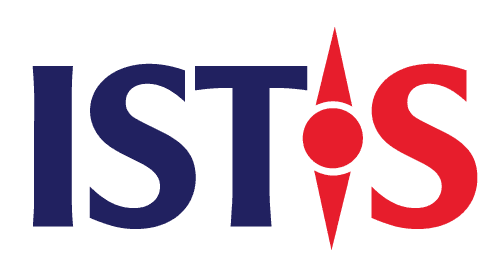Why Venture Funding Remains Geographically Concentrated in Vietnam
Despite the surge in startup activity across Vietnam, venture capital remains heavily concentrated in two urban centers: Hanoi and Ho Chi Minh City. These cities host the majority of active VC firms, demo days, corporate accelerators, and angel networks — while other regions, from the Mekong Delta to Central Highlands, remain underfunded and under-networked.
This geographic imbalance is not purely about market logic — it’s also about visibility and access. Founders in cities like Da Nang or Can Tho may have high-potential solutions for agriculture, climate adaptation, or local tourism, but they often struggle to reach investors who operate in vastly different domains, both physically and sectorally. The gap is not always in capability — but in connection.
What’s more, many venture capital firms prefer to work through personal introductions, warm networks, or urban incubators. Startups outside of those circles — especially first-time founders or those without English fluency — are often invisible to these pipelines, no matter how promising their business models might be.
As Vietnam seeks more inclusive growth, this centralization of capital presents a structural bottleneck. To unlock the full potential of the country’s innovation economy, there needs to be a way to bridge capital with creativity — no matter where it emerges. A venture capital portal could be that bridge — turning opaque networks into open, navigable infrastructure.
What a Venture Capital Portal Could Enable
A well-designed venture capital portal could do more than just display a list of investors — it could rebalance the playing field for startups across Vietnam. For founders in Da Nang, Can Tho, Thai Nguyen, or Buon Ma Thuot, such a portal could serve as a digital gateway to opportunity — bridging the physical and informational gap between where ideas emerge and where capital resides.
At its core, a VC portal provides transparency. Rather than relying on personal referrals or scattered news articles, founders could search for firms that match their stage, sector, or values. Want to pitch a seed-stage fund that backs clean energy startups? A smart filter could show you who’s active in that space, their average ticket size, and portfolio companies — even if they’re headquartered in Singapore or HCMC. This democratizes access and cuts through the noise that usually favors urban or well-connected players.
Equally important is what such a portal offers investors. VCs interested in untapped markets — agri-tech, edtech for rural youth, logistics in the Mekong — could identify promising startups outside their current radar. With the right tagging, filters, and regional maps, a portal becomes not just a directory, but a discovery engine for overlooked innovation.
The portal could also act as a neutral ground — a trusted place where startups and investors connect on equal footing, without gatekeeping or pay-to-play barriers. It could be maintained by a public-private partnership or as an open innovation utility by the National Innovation Center (NIC), with data verified, regularly updated, and shaped by community needs.
In short, a venture capital portal is not just a tool — it’s a shift in power. It opens doors that geography and privilege have historically kept closed.
Behind the Interface — What It Takes to Operate a Venture Capital Portal
A venture capital portal is only as good as the system that operates it. While the front-end may look like a simple directory or search tool, its real value lies in what happens behind the scenes — the curation, verification, partnerships, and governance that keep the platform alive and trusted. Operating such a portal well is not a tech challenge — it’s an ecosystem design challenge.
First, the platform must be accurate and up-to-date. This means moving beyond static listings and enabling self-updating profiles for both startups and VC firms, verified through onboarding protocols (e.g. LinkedIn integration, portfolio checks, or references). But more importantly, it needs curators — a small editorial or analyst team that ensures quality control, spotlights new trends, and flags inactive or predatory players.
Second, the portal should not be run as a closed system. Instead, it needs to plug into the broader startup ecosystem — syncing with incubators, university programs, regional DOST offices, and even international databases. This interoperability ensures relevance and reach. Imagine a founder in Hue who attended a local university startup challenge: their profile and project should flow into the VC portal without redundant steps.
Governance is key. Rather than being owned by a single private firm or state agency, the portal could be operated by a neutral consortium: co-led by government, ecosystem players, and possibly international donors. This model balances trust, funding, and independence — while also opening space for co-design.
Finally, sustainability matters. The portal must evolve — offering analytics, sector reports, or co-investor tools to keep stakeholders engaged. A subscription tier for advanced insights, or white-label features for VCs, could provide long-term funding without compromising core access.
Building the portal is step one. Keeping it alive, dynamic, and inclusive is where real ecosystem value is created.
Built for Vietnam — Design Principles for a Useful VC Portal
If a venture capital portal is to unlock meaningful value for startups and investors across Vietnam, it must be intentionally designed — not just as a directory, but as a living piece of infrastructure that reflects the needs and nuances of the country’s innovation landscape. A well-designed portal is not simply usable; it’s trustworthy, inclusive, and actionable.
1. Startup-First Interface
The portal should begin with the founder’s experience. What problem are they solving? What stage are they in? What kind of investor do they need? Smart filters — by stage, sector, ticket size, impact focus, geography — can help startups find aligned VC firms in seconds. Tooltips, guides, and even “founder-friendly” ratings can reduce friction and jargon.
2. Dual-Sided Search
VCs, too, need better dealflow — especially in emerging or underrepresented sectors. The portal should allow investors to set alerts, browse by region, or filter by founding team diversity, impact goals, or tech vertical. This positions the platform as a matchmaking engine, not just a listing.
3. Multilingual + Localized Content
To engage rural and regional founders, the portal should operate in Vietnamese first, with thoughtful translations into English for international partners. Regional maps, localized search tags, and sector glossaries help bridge gaps between tech, agriculture, tourism, and other verticals.
4. Verified and Community-Governed
All listings should go through light verification and include reporting functions to avoid scams. A community-led feedback loop can help flag outdated data and suggest improvements.
5. Lightweight but Scalable
The MVP should be mobile-friendly, API-ready, and modular, allowing it to grow into richer features (like co-investor maps, sector dashboards, or capital flow trends) as the ecosystem demands.
Ultimately, good design is not about flash — it’s about function in service of connection. The right portal should feel like a tool the ecosystem already owns — even before it exists.
A National Connector
Vietnam is approaching a pivotal moment in its innovation journey. Talent is everywhere, but capital is still uneven. Ideas flow freely, but funding access remains gated by networks. A venture capital portal can’t solve every ecosystem challenge — but it can connect the dots faster, especially for the regions, sectors, and founders who are currently left waiting.
The question isn’t whether Vietnam needs a venture capital portal — it’s who will lead it, and how it will be built.
Ideally, the portal should be driven by a public-private partnership. Government agencies can provide long-term policy alignment, legitimacy, and funding. Meanwhile, private ecosystem builders or trusted VC firms bring proximity to real user needs and market agility.
International partners could help co-fund and co-design early stages — ensuring the platform reflects global best practices while staying deeply rooted in Vietnam’s context.
But leadership is only part of the equation. For the portal to succeed, it must be treated as ecosystem infrastructure, not a one-time project. That means ongoing funding, flexible governance, and openness to iteration. It also means building trust — with founders, investors, and intermediaries — that the platform is transparent, inclusive, and worth participating in.
Done right, the portal becomes more than a database. It becomes a public good for innovation — lowering friction, widening access, and signaling that Vietnam is serious about capital equity, not just capital efficiency.
In a country where great ideas are born far beyond the metro core, a national venture capital portal can help ensure those ideas are seen, supported, and scaled — no matter where they come from.






